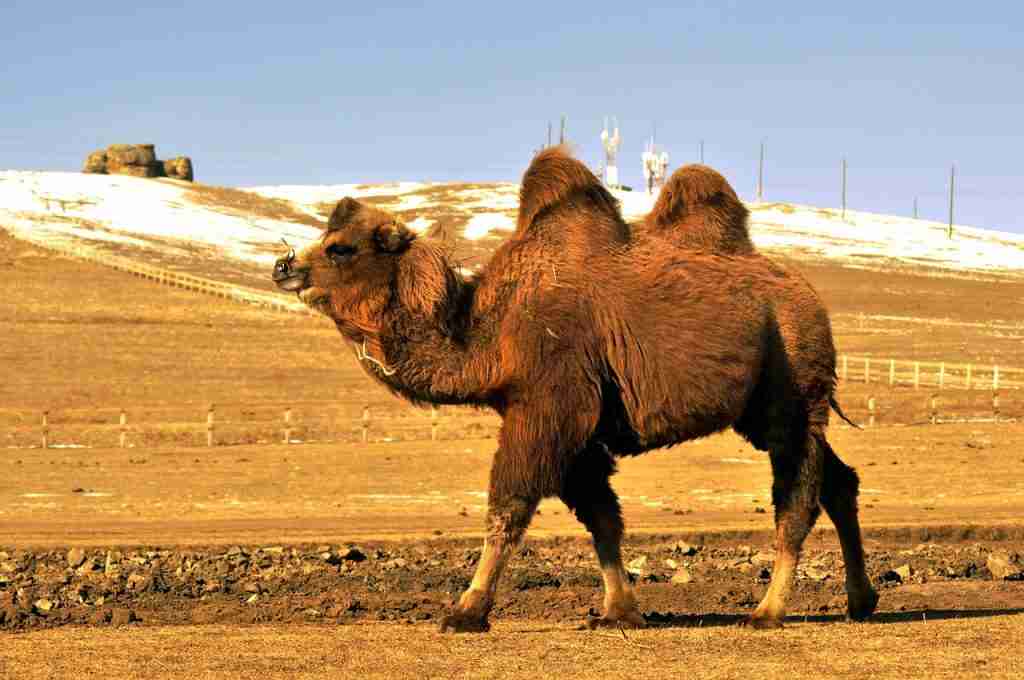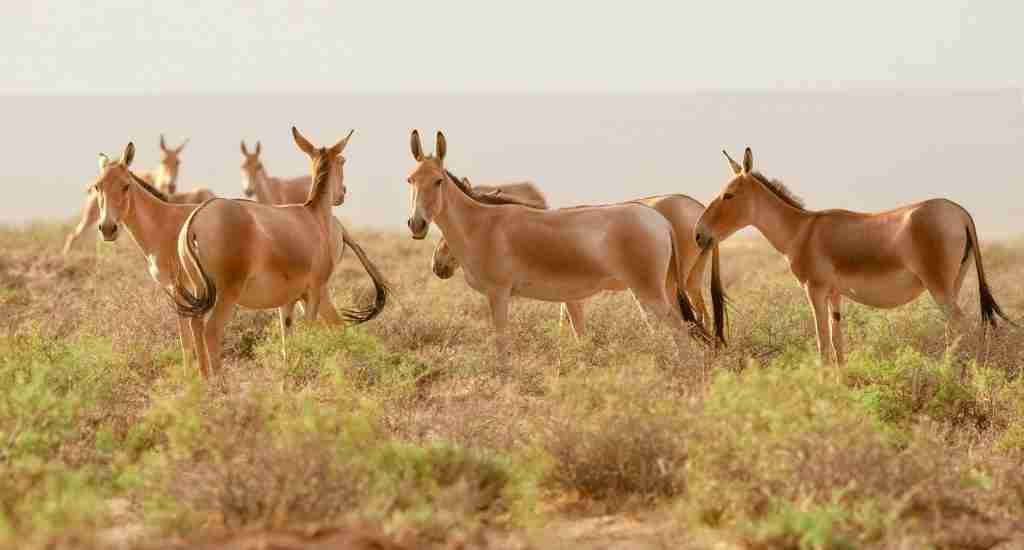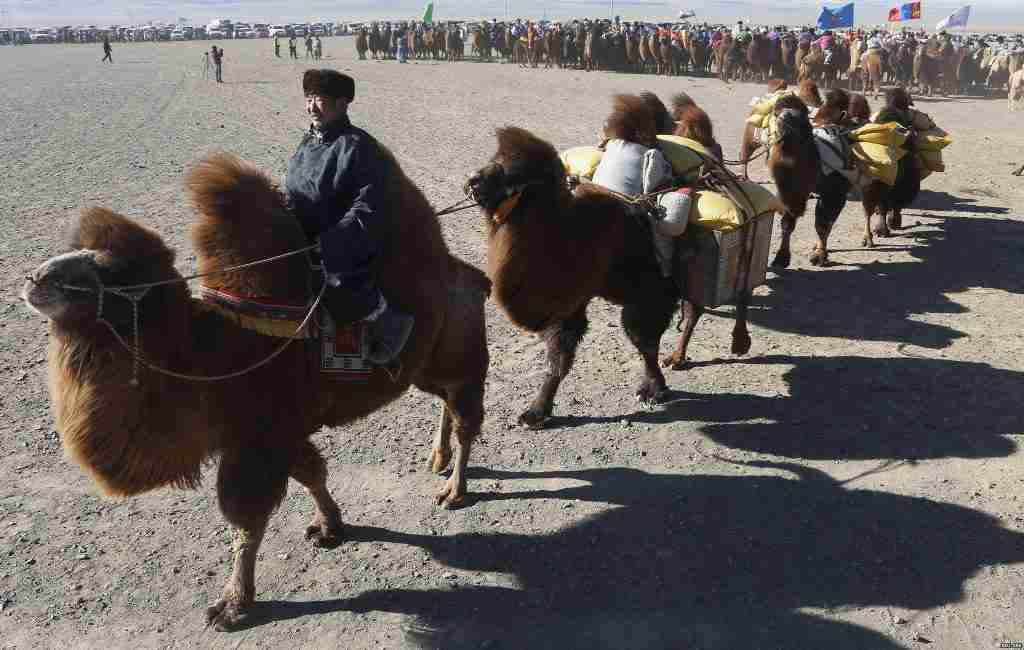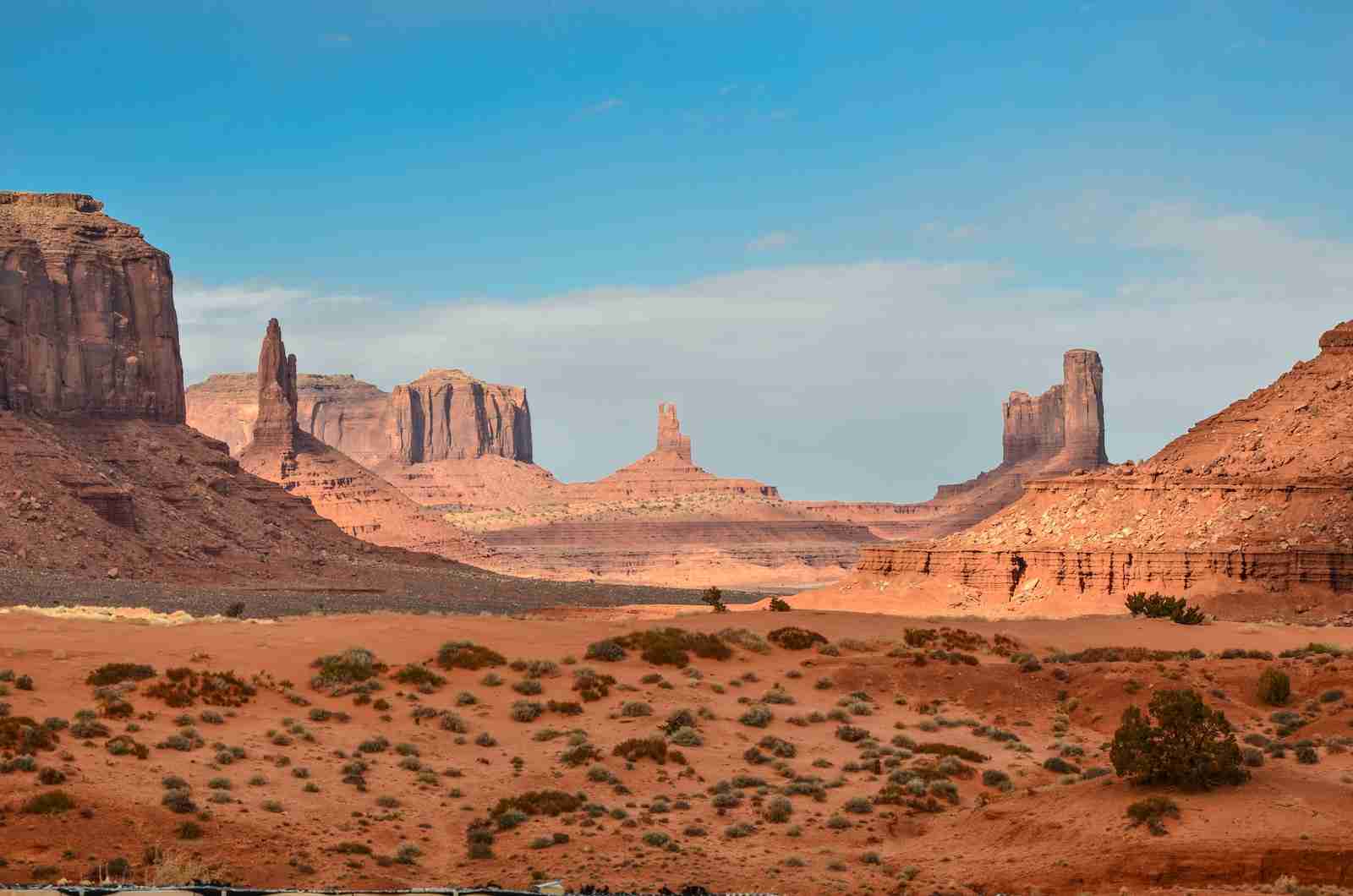22 Fun Facts About The Gobi Desert | Great Asian Wonder
Fun Facts About The Gobi Desert
Here’s our handpicked selection of the top 22 fun facts about the Gobi Desert, a place rich in wonders, myths, and realities:
1. Gobi means ‘waterless place’ in Mongolian.
The name “Gobi” paints a vivid picture of the desert’s arid landscape, translating to “waterless place” in Mongolian. Here, rainfall is as scarce as the occasional oasis, painting a vast canvas of barren splendor. Despite its stark nature, life thrives, adapting to the challenging conditions.
Every drop of water becomes a lifeline, and every adaptation is a testament to nature’s resilience. Here, scarcity breeds innovation, and life, against all odds, finds a way to flourish.
2. The Gobi spans two countries: Mongolia and China.
A vast expanse of mystery and allure, the Gobi Desert stretches across two nations: Mongolia and China. It’s a natural bridge of sand and stone, weaving a tapestry of cultural and ecological wonders.
In China, it’s a silent guardian of the ancient Silk Road; in Mongolia, a keeper of nomadic tales. Every grain of sand here is a silent witness to a history that transcends borders, echoing the stories of two ancient civilizations.
3. Gobi’s Bayanzag area is nicknamed the “Flaming Cliffs.”
Nestled 90 km northwest of Dalanzadgad and just 17 km east of Bulgan soum in Umnugobi province, the Gobi’s Bayanzag area, affectionately termed the “Flaming Cliffs”, mesmerizes with its vibrant red sandstone cliffs.
These fiery landscapes aren’t merely a feast for the eyes; they’re a significant paleontological hub. As you tread this ground, you’re walking where dinosaurs once did. The whispers of ancient times-echo here, making it a must-visit for history enthusiasts and dreamers alike.
4. Gobi Desert is home to the two humps of wild Bactrian Camel.

In the Gobi, the wild Bactrian camel, with its two distinct humps, isn’t just a rare sight but a key player in the desert’s ecology. Adapted to the severe, fluctuating climate, these camels, numbering less than a thousand, munch on the Saxaul tree shrubs scattered amidst the dunes.
It’s not just about survival but also an environmental partnership; as they feast, the camels inadvertently sow seeds of new forests. This unassuming act aids in reducing wind erosion and fostering biodiversity in the harsh yet majestic terrains of the Gobi.
5. Gobi bears, a subspecies of brown bear, live exclusively in the desert.
The Gobi bear, fondly known in Mongolian as “mazaalai”, is a special brown bear found only in the vastness of the Gobi Desert. They’ve claimed the Great Gobi Strictly Protected Area – one of the planet’s largest nature reserves – as their home.
But here’s the thing: there are only a handful of them left, just a few dozen! These bears are nature’s tough cookies, thriving in tough conditions and finding food where it seems impossible.
6. The Khongoryn Els dunes in the Gobi Desert hum and sing.
Amidst the Gobi’s silent grandeur, the Khongoryn Els dunes, also known as Duut Mankhan or Singing Dunes, hold a musical secret. Spanning 20 km in width and stretching 100 km long, these dunes are Mongolia’s largest, with peaks soaring to 800 meters. But their size isn’t their only wonder.
When winds sweep across, they play a captivating humming tune, turning each sand grain into a musical note. This natural symphony, echoing through the desert’s silence, captivates travelers with its mysterious charm.
7. Marco Polo wrote about the Gobi in his famous book.
In “The Travels of Marco Polo“, published around the year 1300, the explorer paints a vivid picture of the Gobi Desert. It’s an insight into the sheer magnitude and challenging environment of this incredible desert.
He mentioned, “It’s so vast that traveling from one end to the other might take a year. Even at its narrowest, it demands a month to cross. Dominated by mountains, sands, and valleys, this seemingly endless landscape offers little in the way of food.”
8. Ancient trade routes, the Silk Road, passed through the Gobi Desert.
The ancient Silk Road, from around the 2nd century BC to the 14th century AD, a network of trade routes connecting the East to the West, made its way right through the heart of the Gobi Desert. Imagine merchants and travelers, journeying on camelback, carrying goods like spices, silks, and precious gems.
While the Gobi’s vastness posed challenges, it also bridged cultures and facilitated exchange. This desert, with its dunes and winds, stood witness to countless tales of adventure, commerce, and cultural melding.
9. Gobi Desert agates, semi-precious gemstones, are native to the region.
The Gobi Desert Agate, a gem found beneath the vast terrains of the Gobi in China, especially the Alxa League of Inner Mongolia, carries a legacy of intrigue and value. Comprising Agate and Chalcedony, both from the Quartz family, these stones were once the jewels of nomadic tribes in Mongolia and China.
Their rarity made them sought-after trade items along the ancient Silk Road. Even today, their exact locations remain cloaked in mystery, protecting the treasures of the desert.
10. Gobi Desert is home to the Jerboa, a tiny rodent with large ears.
The Gobi jerboa, discovered in 1925 by Glover Morrill Allen, is a unique rodent native to the Gobi Desert spanning China and Mongolia. Characterized by its oversized ears, almost thrice the size of its head, this little creature boasts an exceptional sense of hearing, aiding its survival in the harsh desert.
With a grayish-buff fur similar to Allactaga Siberia, it’s truly adapted to its environment. While 163 occurrences are recorded, its exact population remains a mystery.
11. Saxaul Forest trees in the Gobi Desert help stabilize the dunes.
Saxaul forests, found predominantly in Mongolia’s arid regions, are a crucial natural defense, anchoring dunes and mitigating sand storms. Spanning 25.3% of Mongolia’s forest area across 7 provinces and 39 sub-provinces, these forests face threats from logging and firewood collection, intensifying storm severity.
Unique to the region, saxauls are distinct dry land plants, adapting remarkably to the desert climate with their extensive root systems, drawing water from deep below, ensuring their long-term survival in the challenging environment.
12. The Gobi Desert is expanding due to Desertification.
The Gobi Desert, already vast, is stretching its boundaries, particularly towards the south into China, due to “desertification.” Over 70% of Mongolia faces degradation due to factors like overgrazing, especially from increased goat farming for cashmere, and deforestation. Every year, China loses 3,600 km2 of grassland to the encroaching desert, heightening dust storms.
While the boundaries of desert and grassland fluctuate, human and climatic factors play a significant role in this ecological shift, impacting both natural habitats and human livelihoods.
13. Several wildcat species, including Pallas’s cat, inhabit the Gobi.
The Pallas’s cat, recognized for its dense fur and distinct face, remains a mysterious creature in the wild terrains of Mongolia, specifically in Ikh Nartiin Chuluu Nature Reserve and national parks like Khustain Nuruu and Gobi Gurvansaikhan. While once heavily hunted, with over 10,000 skins traded annually, protective measures have seen a decline in hunting.
Mongolia halted international trade in 1988, but local trade persists, threatening the species. Despite its popularity, much about its numbers and distribution remains unknown.
14. Desert gazelles, known as Goitered Gazelles, roam the Gobi plains.
Goitered Gazelles, distinctive for their enlarged neck and throat during mating season, roam the sands and gravel plains of the Gobi. Sadly, their numbers have dwindled. In the early 1990s, Mongolia boasted 60,000 of these graceful creatures; now, less than 30,000 remain.
The Gobi, home to the largest population of Goitered Gazelles, has witnessed this decline over decades, a shift attributed to various environmental and human factors, marking a pressing need for conservation efforts to protect this iconic species.
15. The Gobi Desert experiences extreme temperature shifts within a day.
The Gobi Desert’s climate is a masterclass in extremes, marked by dramatic temperature swings, often as much as 35°C in just 24 hours. Nestled at 910–1,520 meters above sea level, its elevated location couples with its northern proximity to gift it a unique climate.
Winter unveils a cold, frost-kissed landscape, while summer can soar to +50°C. It’s not just a desert; it’s a realm where temperatures dance between extremes, painting a landscape of adaptation and survival.
16. Wild asses called “khulans” are native to the Gobi region.

The Mongolian wild ass, also known as the Gobi khulan or simply “khulan,” has seen its habitat in Mongolia shrink by half in the past 70 years. With only about 42,000 in Mongolia and 5,000 in Northern China, they’re now listed as Near Threatened.
Though they’ve been protected in Mongolia since 1953 and recognized globally by CITES, Convention on International Trade in Endangered Species of Wild Fauna and Flora in 1973, challenges persist. Alarmingly, poaching for meat is on the rise, as wild ass meat becomes a local alternative to domesticated sources.
17. Khara-Khoto, once a thriving metropolis, now lies forgotten in the Gobi.
Khara-Khoto, the “Black City,” was once a prosperous hub nestled in the Gobi Desert’s expanse. Established in the 11th century by the Tangut, its walls witnessed centuries of vibrant trade, culture, and even a benevolent reign under Genghis Khan. Acting as a Silk Road nexus, it attracted traders and explorers like Marco Polo.
However, its demise came brutally in the 14th century when the Ming dynasty cut off its water, leading to mass despair and abandonment. The once-thriving city remained lost in the sands of time until rediscovery in the 20th century.
18. Despite being a desert, Gobi is not all sandy at all.
The Gobi, often imagined as vast stretches of sand, is surprisingly only 5% sandy. Instead, it’s predominantly a canvas of bare rock. Among its diverse landscapes, it boasts the majestic Khongor Sand Dunes, stretching 180km and rising 80 meters high, making it among the world’s largest.
Contrary to perceptions, the Gobi isn’t just a hot, sandy expanse. It’s a mosaic of mountains, green valleys, oases, rivers, and even sites rich in dinosaur fossils. Covering 40% of Mongolia, it’s a semi-desert teeming with life and history.
19. The Gobi Desert region is one of the wealthiest areas in Mongolia.
The Gobi Desert isn’t just a vast desert; it’s a treasure trove of minerals, making it a wealth hotspot in Mongolia. Beneath its surface lie vast deposits of coal, copper, gold, and even uranium. Notably, Oyu Tolgoi, one of the world’s largest copper and gold mines, and Tavan Tolgoi, a significant coking coal deposit, contribute massively to Mongolia’s economy.
Oyu Tolgoi alone represents over 30% of Mongolia’s GDP. With an investment surpassing US$4.6 billion, it’s the nation’s most ambitious financial venture, symbolizing Gobi’s rich potential.
20. The Gobi Desert is a collection of 33 distinct deserts.
The Gobi Desert, often visualized as one vast expanse, is intriguingly a mosaic of 33 distinct deserts, each flaunting its unique terrains and characteristics. One standout among these is the “Galbiin Gobi,” spanning an impressive 70,000 square kilometers. But the Gobi’s diversity doesn’t stop there.
From flower-dotted steppes and striking canyons to saline areas adorned with green saxaul thickets, it’s a land of contrasts. Amidst its vastness, one can find serene oases, craggy beauties, and expansive hollows, making the Gobi a multifaceted gem in Mongolia’s crown.
21. Prehistoric Gobi Desert was at the bottom of the sea.
The Gobi Desert, currently a vast stretch of arid land, tells a fascinating story of evolution. Around 145 million years ago, this plateau was submerged underwater, leaving behind fossilized corals and sea creatures in places like the Gobi Altai province.
As waters receded, it transformed into a lush habitat of rivers, lakes, and forests, attracting dinosaurs and early mammals. They thrived, leaving behind a rich fossil record, until a significant extinction 65 million years ago. The Gobi’s shift to a desert encapsulated these remnants, preserving ancient tales in layers of shale and sandstone.
22. Thousand Camel Festival in the Gobi Desert.

Every year on March 6th and 7th, Mongolia celebrates the Thousand Camel Festival, a vibrant tribute to the Bactrian camel, vital to nomadic herders. Initiated in 1997, this festival, now famous globally, showcases a fusion of traditional races, camel polo, beauty contests, and rich folk performances.
Beyond mere festivities, it’s a conservation effort, emphasizing the camel’s importance in local livelihoods and aiming to boost tourism. Memorable moments, like a camel birth witnessed during the event, not only delight attendees but also symbolize hopes for a thriving camel population in the region.
Conclusion for Fun Facts about The Gobi Desert
And there we have it – a factual ride into the mesmerizing world of fun facts about the Gobi Desert! Far from just being vast stretches of sand, the Gobi unveils tales of ancient cities, unique wildlife, and musical dunes.
Whether it’s the hum of the Khongoryn Els or the legacy of the Bactrian camel, this desert is brimming with surprises. Remember, every grain of its sand tells a story, waiting to be explored.
FAQs: Fun Facts about the Gobi Desert
The Gobi Desert stretches across southern Mongolia and northwestern China, nestled between the Mongolian Altai and Khangai mountains, reaching towards the vast expanse of the Himalayan Plateau.
Spanning 1,600 km in length and up to 1,000 km wide, the vast Gobi Desert covers about 1.3 million square km, exceeding the combined size of Germany and France.
The Gobi is overall a cold desert, with frost and occasionally snow occurring on its dunes. Besides being quite far north, it is also located on a plateau roughly 910–1,520 m (2,990–4,990 ft) above sea level, which contributes to its low temperatures.
The Gobi Desert hosts diverse wildlife, including wild camels, kulan, dzheiran gazelles, and dzeren antelopes. Przewalski’s horse is likely extinct in the wild. The area also has rodents and reptiles.
The Gobi’s dryness results from the rain shadow effect, where the Himalayas block moisture-laden clouds from the Indian Ocean. Its distance from the Pacific Ocean also contributes to its aridity.







